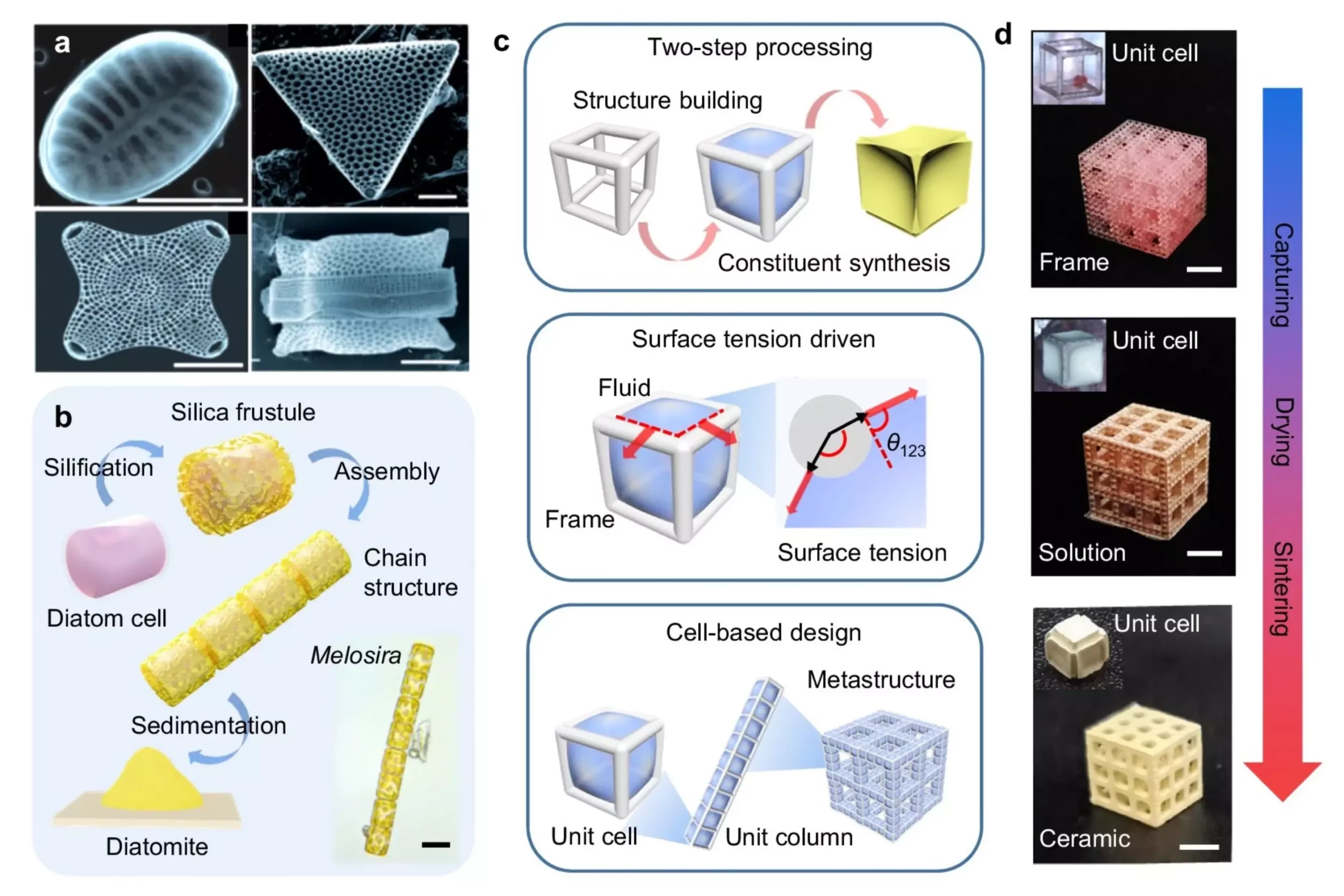Ceramic manufacturing has always been an intricate process, with limitations in traditional additive manufacturing methods hindering the production of complex cellular ceramics. However, a recent study led by the School of Engineering at the Hong Kong University of Science and Technology (HKUST) has introduced a groundbreaking method that aims to revolutionize the design and processing of ceramic materials.
The research team, under the guidance of Associate Professor Yang Zhengbao, developed the Surface Tension-Assisted Two-Step (STATS) processing strategy to fabricate cellular ceramics with programmed 3D cell-based configurations. This innovative approach involves two key steps: the preparation of cell-based organic lattices using additive manufacturing and filling the lattice with the required precursor solution.
One of the major challenges faced by the team was controlling the liquid geometry within the architected cellular lattices. To tackle this issue, they leveraged the natural phenomenon of surface tension to capture the precursor solution in the lattices. This method not only allowed for precise control of the liquid geometry but also facilitated the manufacturing of cellular ceramics with high accuracy.
By separating ingredient synthesis from architecture building, the STATS approach enables the programmable manufacturing of cellular ceramics with varying cell sizes, geometries, densities, meta-structures, and constituent elements. This high level of programmability makes the method applicable to both structural and functional ceramics, expanding the possibilities for new applications in energy, electronics, and biomedicine.
Researchers conducted studies on the piezoelectric performance of cellular piezoceramics to verify the effectiveness of the STATS approach. The results showed a significant improvement in the local compactness and a decrease in micropores, leading to a high piezoelectric constant even at very high overall porosity. This demonstrates the superiority of the new method in manufacturing cellular ceramics with enhanced properties.
Professor Yang revealed that the method was inspired by diatoms, single-celled algae known for their highly precise silica frustule structures. By emulating the genetically programmed biomineralization process of diatoms, the research team was able to create complex ceramic architectures with diverse shapes, geometries, and assembly. This nature-inspired approach opens up new possibilities for applications in various industries.
The innovative method developed by the research team at HKUST represents a significant advancement in ceramic manufacturing. By overcoming the limitations of traditional additive manufacturing methods, the STATS approach enables the creation of complex cellular ceramics with unprecedented precision and control. With potential applications in energy, electronics, and biomedicine, this novel method paves the way for the future of ceramic materials.


Leave a Reply